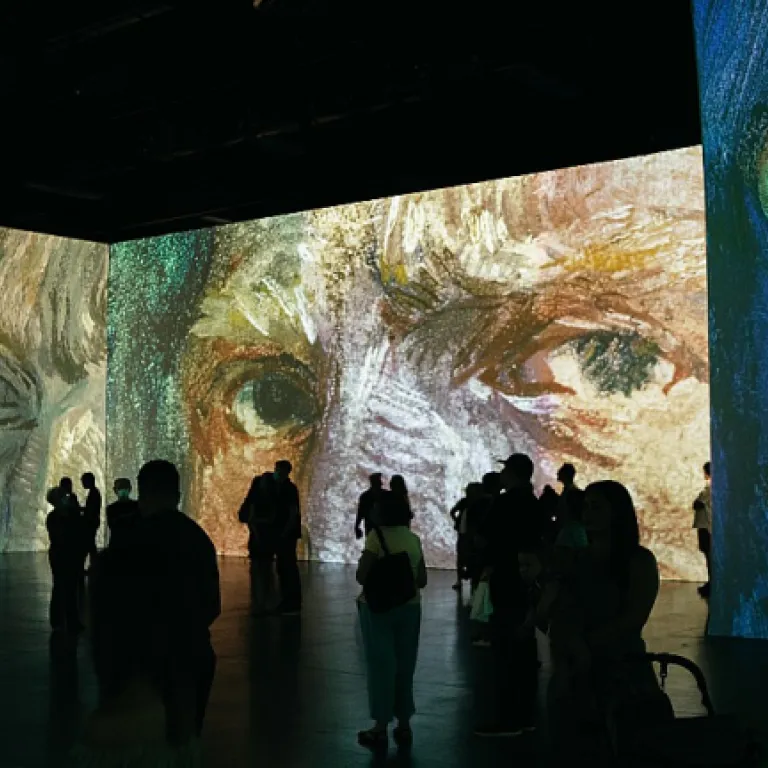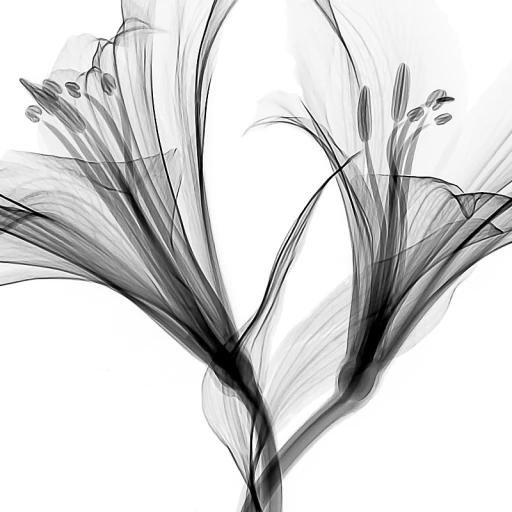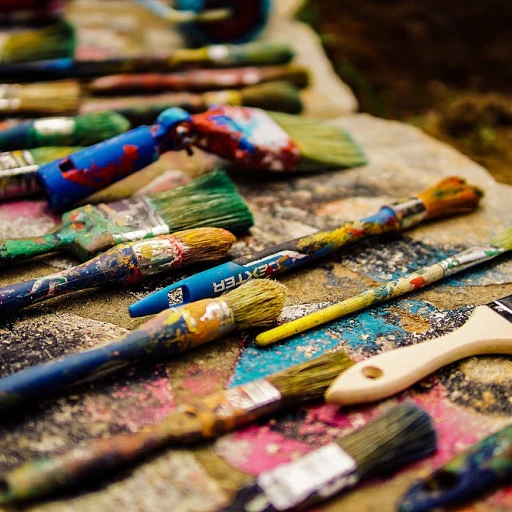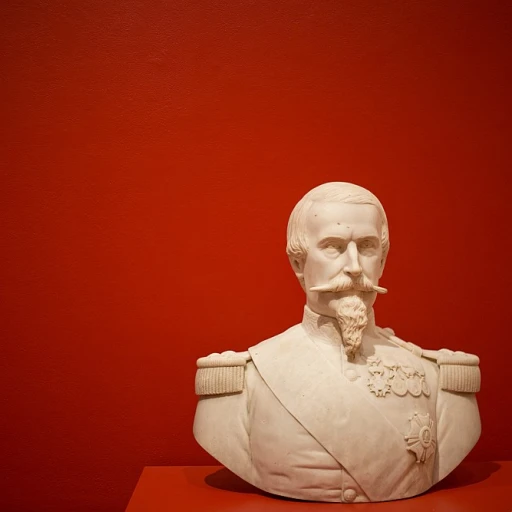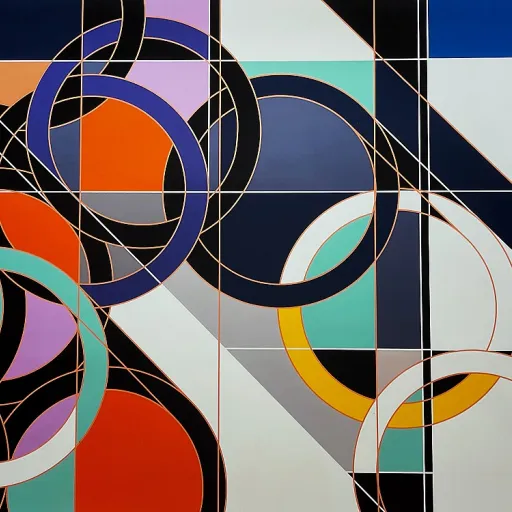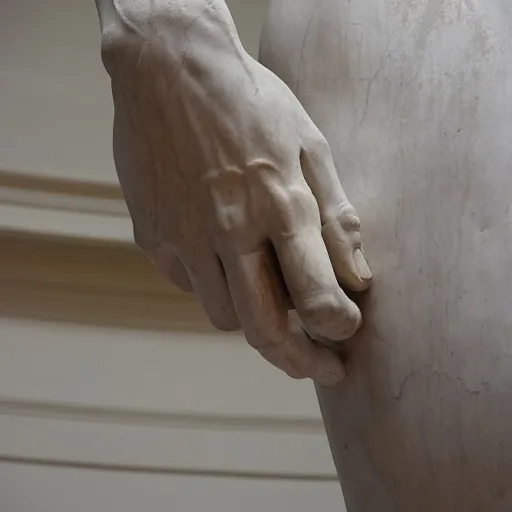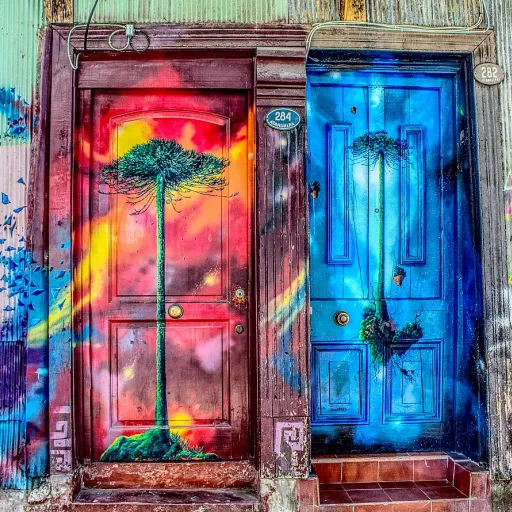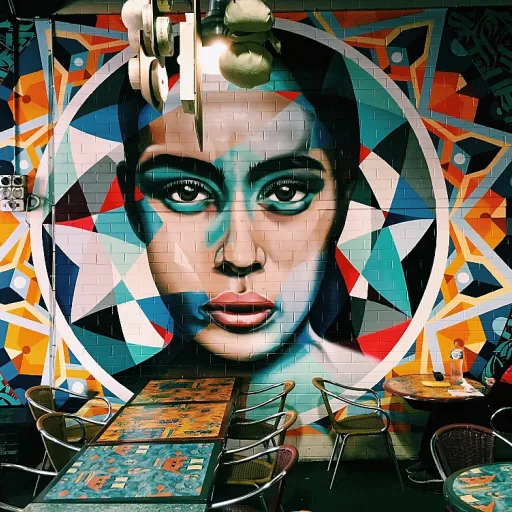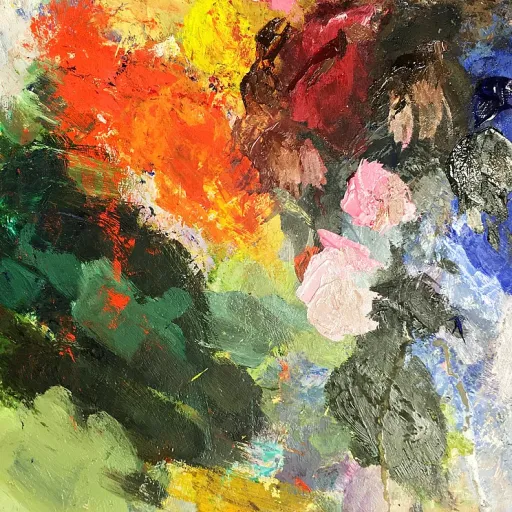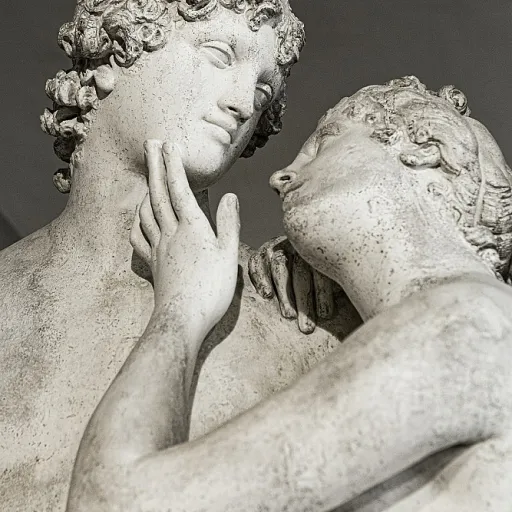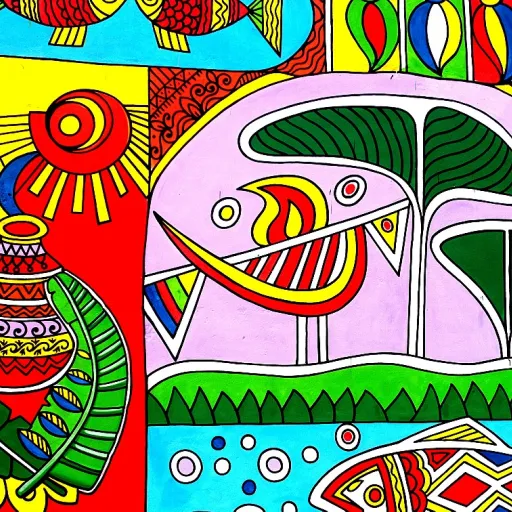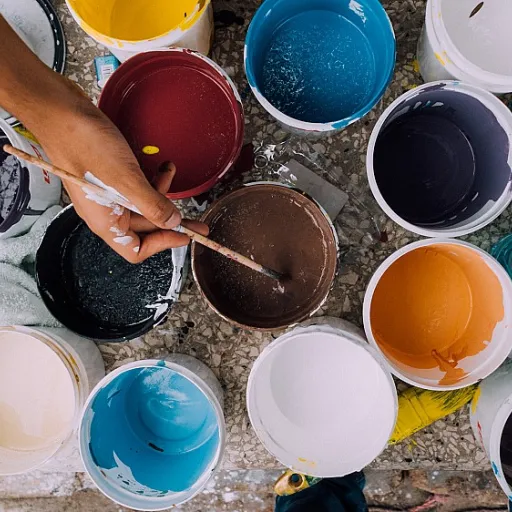-teaser.webp)
Understanding the Concept of Scaling in Art
Decoding the Scale in Luxury Art
In the realm of luxury artwork, the concept of scaling is pivotal. It refers to the process of adjusting the size and scope of an art piece, whether it be a painting, sculpture, or any other form of creative expression. Artists often grapple with the decision of whether to create large or small scale artworks, as each choice carries its own set of implications and challenges.
When artists decide to scale their artwork, they must consider the impact on the piece's visual appeal and the message it conveys. A large scale painting, for instance, can dominate a wall, drawing the viewer's attention and allowing for a more immersive experience. Conversely, small scale works can offer a more intimate encounter, inviting viewers to engage closely with the details.
Scaling is not just about physical dimensions; it's also about the business aspect of art. Artists must navigate the market dynamics, understanding how different sizes appeal to various segments of collectors. Larger works might be more suited for galleries and public spaces, while smaller pieces could find their place in private collections.
The creative process of scaling involves more than just enlarging or reducing an image. Artists often use techniques like drawing a grid to maintain proportions when they scale an image. This meticulous attention to detail ensures that the essence of the artwork is preserved, regardless of its size.
In today's digital age, technology plays a crucial role in scaling art. High resolution images allow artists to scale their works without losing quality, making it easier to share art on social media or offer free downloads for promotional purposes. This technological advancement has opened new avenues for artists to reach a broader audience, enhancing their visibility and marketability.
For those intrigued by the intersection of scale and luxury art, exploring the allure of Americana art in luxury collections can provide further insights into how scale influences artistic expression and market trends. Discover more about this captivating aspect of luxury art.
The Role of Exclusivity in Luxury Art
The Power of Exclusivity in the Luxury Art Market
In the realm of luxury artwork, the concept of exclusivity plays a pivotal role. This aspect is not just a value-added proposition but a defining characteristic that elevates artwork from being merely a visual object to becoming a coveted treasure on a collector's wall.
Exclusivity can transform the perception of a piece, impacting its scale, both metaphorically and literally. Artists create distinctive works that stand out in a world saturated with images and creativity. For collectors, possessing something unique—whether it is a large scale painting or a meticulously drawn grid—is an affirmation of taste, status, and discernment.
However, exclusivity isn't just about size or scale image; it's about the human element infused in each creation. The artist's journey, the creative process, and the sensory experience intertwined in each piece all contribute to making art more than just an image.
Art collectors and enthusiasts are drawn to the allure of such exclusivity, often likened to the selectiveness seen on Wall Street. The notion of being among the few who own a particular piece enhances its value and creates a sense of belonging to an elite circle. Whether a painting larger than life or an art small enough to fit in the palm, the rarity imbued not just in the object, but in the narrative surrounding it, becomes the real treasure.
To see how the predator's throne beckons luxury collectors, read more here.
This allure of exclusivity extends beyond the artwork itself to its business implications. Fine art businesses leverage exclusivity as a cornerstone of their strategy, offering art on a subscription basis or as a free download limited to a select audience. This model ensures that even in larger productions, the aura of exclusivity remains intact.
In conclusion, creating exclusivity in the luxury art sector is about curating an experience that transcends the physical artwork, offering collectors a piece of a grander narrative. The work's value isn't just in its craftsmanship but in the rarefied air it holds in a world where social media and high resolution downloads dominate.
Challenges Faced by Artists in Scaling Luxury Art
Overcoming the Hurdles of Expanding Artworks
Scaling luxury artwork presents a unique set of challenges for artists. The journey from creating a small, intimate piece to a large-scale masterpiece is not merely about increasing the size of the canvas. It involves a complex interplay of factors that can impact the final work, the artist's creative process, and the market reception.
One of the primary challenges is maintaining the exclusivity that defines luxury art. As artists attempt to scale their work, they must carefully select which pieces to enlarge, ensuring that the essence and uniqueness of the original are not lost. This often involves a delicate balance between artistic integrity and market demands.
Another significant hurdle is the technical aspect of scaling. Artists must consider how to scale an image without losing its resolution or detail. This requires a deep understanding of how to draw a grid, scale images, and paint large canvases while preserving the fine art quality. The transition from a small, detailed work to a larger piece can sometimes result in a loss of intimacy and connection with the viewer.
Moreover, the business side of scaling artwork cannot be ignored. Artists need to navigate the logistics of producing larger works, which often involves higher costs and more complex logistics. From sourcing materials to finding appropriate spaces for creation and display, the challenges are multifaceted.
Finally, artists must also consider the role of technology in scaling their work. With the rise of social media and digital platforms, there is an increasing demand for high-resolution images that can be shared and downloaded. This digital shift presents both opportunities and challenges, as artists strive to maintain control over their work while reaching a broader audience.
In conclusion, while scaling luxury artwork offers exciting possibilities, it requires artists to navigate a complex landscape of artistic, technical, and business challenges. By understanding these hurdles, artists can better prepare themselves to create impactful large-scale works that resonate with collectors and art lovers alike.
Collectors' Perspective on Scaling Art
Collectors' Insights on Scaling Art
For collectors, the concept of scaling in the luxury artwork market presents both opportunities and challenges. As they navigate this intricate landscape, several factors come into play, influencing their decisions and preferences.
Firstly, the size of the artwork is a critical consideration. Collectors often deliberate between acquiring large scale pieces that make a statement on a wall and small scale works that offer intimacy and versatility. The choice between a painting larger than life and an art small enough to fit a cozy corner can significantly impact the ambiance of a space.
Moreover, the exclusivity of a piece is paramount. As discussed earlier, exclusivity enhances the allure of luxury art. Collectors are drawn to works that are not only unique but also resonate with their personal taste and the creative process of the artists. This often involves selecting pieces that reflect a balance between the human touch and the business aspect of art acquisition.
Another aspect is the technological impact on art collection. With advancements in technology, collectors now have access to high resolution images and can scale image previews before making a purchase. This digital shift allows for a more informed decision-making process, where collectors can visualize how a piece will fit within their existing collection or wall space.
Finally, the role of social media cannot be overlooked. Platforms offer collectors a space to share art and engage with a broader community. This not only enhances the visibility of their collection but also provides insights into emerging trends and artists. However, the balance between maintaining privacy policy and engaging with the public remains a delicate dance.
In conclusion, collectors play a pivotal role in the scaling of luxury art. Their preferences and decisions are influenced by a myriad of factors, from the size and exclusivity of the artwork to the impact of technology and social media. As the market evolves, so too will the strategies and considerations of those who invest in these timeless pieces.
The Impact of Technology on Scaling Luxury Art
The Digital Revolution in Art Scaling
The intersection of technology and art has revolutionized how we perceive and scale luxury artwork. With the advent of high-resolution imaging and digital platforms, artists can now create and share art on a scale previously unimaginable. This technological shift has not only expanded the reach of artists but also transformed the way collectors interact with art.
One of the most significant impacts of technology is the ability to scale artwork from small to large sizes without losing quality. High-resolution images allow artists to paint large canvases or create fine art prints that retain the intricate details of the original work. This capability is crucial for artists who wish to draw grid patterns or scale images for larger installations.
Social Media and Online Platforms
Social media platforms have become essential tools for artists to showcase their work to a global audience. These platforms offer a free or subscription-based model where artists can share art, engage with fans, and even sell their work. The ability to download free previews or purchase high-resolution images has made art more accessible to a broader audience, breaking down traditional barriers in the art world.
Moreover, online galleries and marketplaces provide artists with a virtual wall to display their work. This digital space allows artists to scale their business by reaching collectors who might not have the opportunity to visit physical galleries. The convenience of online platforms also enables collectors to select and purchase art small or large, depending on their preferences and wall space.
Balancing Privacy and Exposure
While technology offers numerous benefits, it also presents challenges related to privacy and content control. Artists must navigate the fine line between sharing their creative process and maintaining the privacy of their work. Implementing a privacy policy and understanding the implications of digital exposure are essential for artists who wish to protect their intellectual property while scaling their art.
In conclusion, technology has become an integral part of the art world, offering artists and collectors new ways to engage with and scale luxury artwork. As we look to the future, the continued evolution of digital tools will undoubtedly shape the landscape of luxury art, offering exciting possibilities for both creators and collectors alike.
Future Trends in Scaling Luxury Artwork
Anticipating the Future of Luxury Art Expansion
The future of scaling in the luxury artwork market is poised for transformation, as both technology and emerging trends sculpt new paradigms for artists and collectors alike. The fusion of digital advancements and traditional methods inspires novel creative processes, enabling artists to innovate and push beyond conventional limits.
For artists, creating large-scale art through techniques like drawing grids or utilizing high-resolution image scales opens up new avenues of expression. The dichotomy between small artworks and paintings larger than life continues to challenge and inspire creators. Furthermore, artists can leverage social media platforms to showcase their work, enhance engagement, and expand their audience reach without sacrificing exclusivity.
In the world of business, scaling artwork becomes a strategic pursuit. Offering both large scale and art small options allows artists to cater to diverse collector preferences while maintaining brand integrity. Additionally, the rise of a subscription-based model could offer collectors the flexibility to select artworks that reflect current tastes or complement existing collections.
Another notable trend is the use of technology platforms for free downloads and prints, providing art enthusiasts the chance to explore luxury art in small scale formats. These platforms, while ensuring privacy policy adherences, offer catalogs that can be used to visually select which piece might eventually adorn a collector's wall.
Technology's impact ripples through the art world, streamlining business operations and enhancing the human element in art transactions. With seamless access to artwork databases, collectors can easily scale images, paint large canvases, or switch between small scale to larger formats as they skip content across platforms.
As we look to the horizon, it's clear that the luxury art market remains dynamic. Embracing changes, while maintaining the rich tradition of exclusivity and craftsmanship, will ensure the artwork created today continues to be revered tomorrow. Artists’ and collectors' abilities to transcend boundaries in scale artwork will indeed shape the future, bringing even more captivating, diverse pieces to avid art lovers around the globe.

